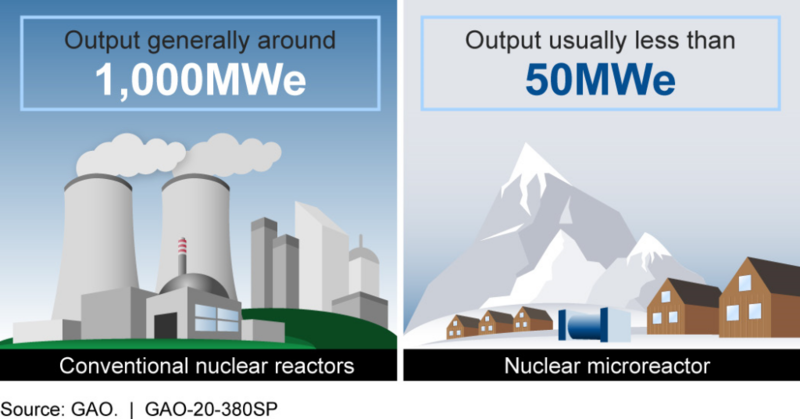Nuclear reactors in Alaska: First, let’s poke out our eyes

Here’s a swell idea. We’ll bury a bunch of nuclear bombs on the North Slope right near the Chukchi Sea, detonate them and create an artificial harbor. Not really sure how it will affect people, animals, plants or water in the area…but we’ll find out afterwards.
This was seriously advocated in the late 1950s and early 1960s by Edward Teller, “father of the hydrogen bomb.” He was not alone in the love of his explosive, radioactive children. Inside the state of Alaska he was joined by political leaders, newspaper editors and leading members in higher education and religion.
Ultimately the lunacy was stopped by a coalition of Inupiaq people in the village of Point Hope, a handful of scientists working with the Atomic Energy Commission, and, increasingly, conservationist organizations across the country.
Now, decades later, we have another experimental radioactive challenge fueled by outside corporate actors and welcomed by Alaska political leaders: nuclear microreactors. At the current rate they’ll be popping up around the state in just a few years, but not to worry! According to Mike Shaqqo, a senior vice president with Westinghouse Electric, the eVinci nuclear reactor (one of a number being considered for Alaska) “…cannot melt. It will not melt. No bad guy can take it and make bad stuff out of it.” Comforting if true, but not all parties agree that microreactors are particularly safe.
Early in 2020 the United States Government Accountability Office (GAO) released a fact sheet entitled, “Science & Tech Spotlight: Nuclear Microreactors.” Here are a few of the things the GAO had to say about the safety of the new emerging microreactor technologies:
“Many of the designs call for the use of fuel enriched up to 20% U-235 (high-assay, low-enriched uranium, or HALEU), which is currently unavailable in the commercial U.S. market, and may also present proliferation and safety risks.”
“…using HALEU or higher enriched fuel in a microreactor makes it a more attractive target for theft or diversion into a weapons program because less work is needed to make it into weapons-grade uranium.”
“New or novel fuels could present challenges for waste treatment and disposal, similar to or greater than those faced by current commercial reactors.”
“Some designs may not be effectively addressed by current regulatory approaches and could require modifying or developing new regulations.”
Curiously, the GAO did not say, “No bad guy can take it and make bad stuff out of it.”
The non-profit Union of Concerned Scientists was founded by scientists and students at the Massachusetts Institute of Technology in the late 1960s. In 2021, the organization issued “’Advanced’ Isn’t Always Better: Assessing the Safety, Security, and Environmental Impacts of Non-Light-Water Nuclear Reactors.” NLWR designs would be used for microreactors. The organization’s take on the impacts:
“If nuclear power is to play an expanded role in helping address climate change, newly built reactors must be demonstrably safer and more secure than current generation reactors. Unfortunately, most ‘advanced’ nuclear reactors are anything but…”
“Based on the available evidence, we found that the NLWR designs we analyzed are not likely to be significantly safer than today’s nuclear plants. In fact, certain alternative reactor designs pose even more safety, proliferation, and environmental risks than the current fleet.”
We Alaskans have been put on notice that our villages and our people are going to be the testing ground for experimental and potentially extremely dangerous nuclear material. How have our political leaders responded to this extraordinary challenge? They poked out the eyes of Alaska’s health and safety institutions.
Earlier this year the Governor signed off on “SB 177: Relating to nuclear facility siting permits; and relating to microreactors.” The bill specifically exempts nuclear microreactors from requirements that several departments study and make “…the recommendations for the enactment of laws or amendments to law administered by it, and the proposals for amendments to the regulations issued by it that it considers necessary.”
The Department of Health is not required to act on “hazards to the public health and safety.”
The Department of Labor and Workforce Development is not required to act on “hazardous working conditions.”
The Department of Transportation and Public Facilities is not required to act on “the transportation of special nuclear, by-product, and radioactive materials on highways of the state.”
The Department of Commerce, Community, and Economic Development is not required to regulate “the insurance of persons and property from hazards to life and property resulting from atomic development.”
The Department of Fish and Game is not required to act on “hazards to the natural resources of the state, including wildlife, and as to the protection of rivers, streams, and airspace from pollution.”
Yep. Just poked out our eyes.








